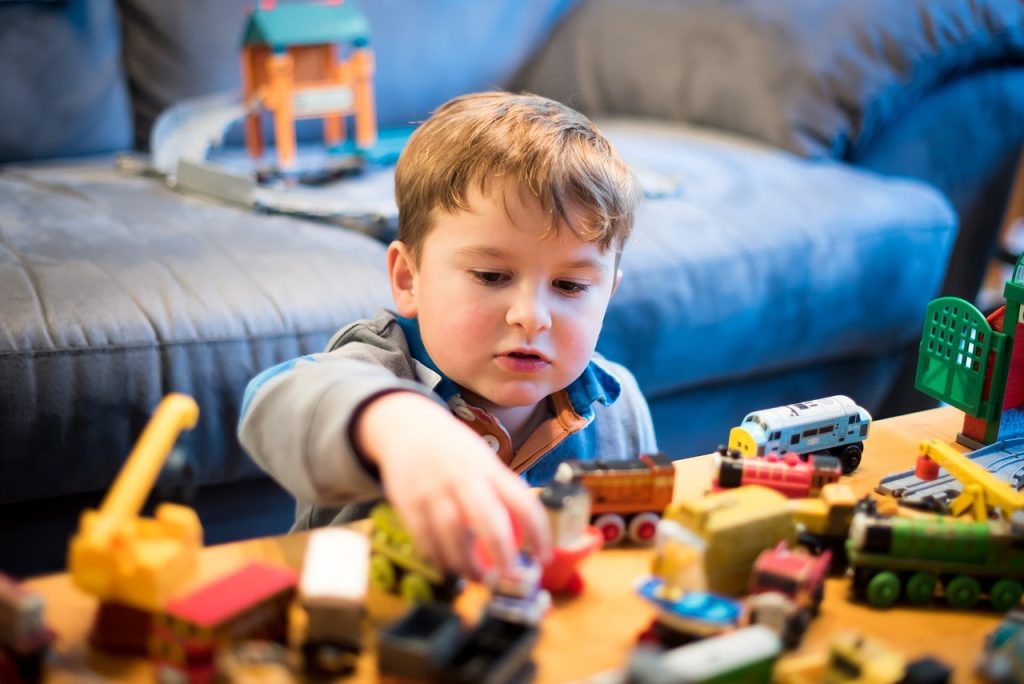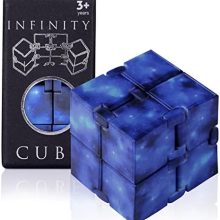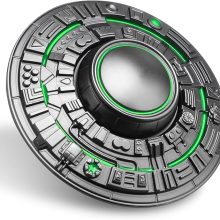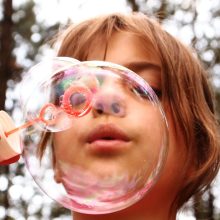What Are STEM Toys And Why Are They Important?

What Are STEM Toys?
The question What are STEM toys is an important one to ask.
In today’s fast-paced, technology-driven world, it’s more important than ever to prepare our children for the future. One fantastic way to do this is through STEM toys. STEM stands for Science, Technology, Engineering, and Mathematics, and these toys are specifically designed to make learning in these areas fun and engaging for kids. Imagine toys that do more than just entertain—they spark curiosity, encourage problem-solving, and teach valuable skills that kids will use for the rest of their lives. That’s the magic of STEM toys or maybe it would be better to say the SCIENCE of STEM toys. They seamlessly blend play with education, turning everyday playtime into a rich learning experience In this article, we’ll answer the question of what are STEM Toys, why are they important, and how they can transform the way kids learn and grow., and how they can transform the way kids learn and grow. Whether you’re a parent looking to enhance your child’s playtime or an educator seeking new ways to inspire young minds, understanding STEM toys is a great step towards nurturing the next generation of innovators.
What Types Of Toys Count As STEM Toys?
Science Toys
Science toys are a gateway to the wonders of the natural world, sparking curiosity and excitement in young minds. Imagine the joy of a child conducting their first experiment with a chemistry set, watching colors change and substances react right before their eyes. These toys bring abstract scientific concepts to life, making them tangible and fun. Whether it’s peering through a microscope to see the hidden details of a leaf or building a mini volcano that erupts with baking soda and vinegar, science toys provide hands-on experiences that foster a love for discovery. They encourage kids to ask questions, seek answers, and understand the world around them in a deeper, more meaningful way.
Science toys come in many exciting forms, each designed to ignite a child’s curiosity and passion for the natural world. One classic example is the chemistry set, which allows kids to conduct safe, simple experiments at home. These sets often include chemicals, test tubes, and instruction manuals that guide young scientists through various reactions, such as creating colorful solutions or making a small eruption. Another popular science toy is the microscope kit, which includes slides and specimens for children to explore. By examining everyday objects like leaves, insects, or even their own hair, kids can uncover the microscopic world and learn about the structures and organisms that are invisible to the naked eye.
Another engaging science toy is the crystal-growing kit. These kits enable children to grow their own crystals, teaching them about the processes of crystallization and geology. By mixing provided solutions and watching as beautiful crystals form over time, kids gain hands-on experience with chemical reactions and the formation of minerals. Additionally, anatomy models, such as a human skeleton or organ set, offer a fascinating look into biology. These models can be assembled and disassembled, helping children understand the human body’s structure and functions in a tactile, interactive way.
Weather stations are also excellent science toys that teach kids about meteorology. These kits often include tools like thermometers, barometers, and anemometers, allowing children to measure and record weather data. By tracking temperature, humidity, and wind speed, kids can learn about weather patterns and the science behind the forecasts they see on TV. Lastly, astronomy kits, which often come with telescopes and star maps, allow children to explore the night sky. By observing stars, planets, and constellations, kids can delve into the universe’s mysteries and develop a lifelong interest in astronomy.
Technology Toys
Technology toys make the complex world of tech accessible and enjoyable for children. Picture a child programming their first robot, watching it follow commands and perform tasks, all through a simple code they wrote themselves. These toys demystify the digital world, introducing kids to coding, electronics, and robotics in a playful, engaging manner. Interactive kits teach them how to build circuits, light up LEDs, and understand the basics of how gadgets work. By playing with technology toys, kids gain essential skills for the future, learning to think logically, solve problems creatively, and navigate our increasingly digital world with confidence and curiosity.
Technology toys are designed to introduce children to the digital and electronic worlds engagingly and educationally. One popular example is the coding robot, such as the Dash and Dot robots. These programmable robots can be controlled using a tablet or smartphone app, where kids write simple codes to make the robots move, light up, or even speak. Such toys teach the fundamentals of coding and computational thinking, providing a hands-on introduction to programming languages and concepts. Another fantastic tech toy is the circuit-building kit, like Snap Circuits. These kits come with various electronic components that snap together easily, allowing children to create working circuits that power lights, motors, and sound effects.
Building and coding toys, such as LEGO Mindstorms or VEX Robotics, offer more advanced technology experiences. These sets enable kids to build sophisticated robots or machines and then program them to perform specific tasks. By combining the physical act of building with the mental challenge of coding, these toys foster a deep understanding of engineering and computer science principles. Additionally, augmented reality (AR) toys, like the Osmo Genius Kit, blend physical and digital play. With these toys, children can interact with physical objects while the AR app enhances their experience with digital animations and interactive challenges, making learning math, spelling, and problem-solving fun and immersive.
For younger children, interactive storybooks like LeapFrog’s LeapStart offer a tech-savvy twist on traditional reading. These books come with a stylus that, when used on the pages, activates sounds, games, and activities related to the story. This encourages kids to engage with reading in a multi-sensory way, improving their literacy and comprehension skills. Additionally, educational tablets designed specifically for kids, such as the Amazon Fire Kids Edition, provide access to age-appropriate apps, books, and games that teach a range of subjects from math to geography. These tablets often come with parental controls, ensuring a safe and controlled digital environment for learning and exploration.
Engineering Toys
Engineering toys are all about building, creating, and problem-solving. Think of the satisfaction a child feels when they complete a complex LEGO structure or design a functioning model with K’NEX. These toys challenge kids to use their creativity and spatial skills to construct various structures, from simple buildings to intricate machines. More advanced kits might include gears, pulleys, and motors, allowing children to explore mechanical principles and create moving models. Engineering toys inspire kids to think like engineers, understanding how things are made and how they work, while also developing perseverance and critical thinking skills as they tackle and solve building challenges.
Engineering toys are perfect for children who love to build and create. One classic example is LEGO sets, which come in various themes and complexity levels, allowing kids to build anything from simple houses to complex vehicles and structures. The LEGO Technic line is particularly great for older kids, as it includes gears, axles, and motors that enable the construction of working models like cranes and cars. These sets teach principles of mechanics and engineering in a hands-on way. Another excellent example is K’NEX building sets, which use rods and connectors to create models that move and function. With K’NEX, children can build roller coasters, bridges, and even robotic arms, exploring structural design and physics concepts as they play.
For a more advanced building experience, the Meccano Erector sets are fantastic engineering toys. These metal construction kits allow kids to create intricate models using nuts, bolts, and mechanical parts. Children can build functional machines like cranes, cars, and even robotic creatures, gaining a deeper understanding of mechanical engineering and the satisfaction of working with real tools and materials. Marble runs, like the Gravitrax system, are also great for budding engineers. These sets involve designing and constructing tracks for marbles to roll through, incorporating elements of gravity, velocity, and kinetic energy. Kids learn about cause and effect as they experiment with different track configurations to create exciting runs.
Engineering toys like the ThinkFun Roller Coaster Challenge game combine puzzle-solving with construction. In this game, kids are given challenges to build roller coasters that meet specific criteria, such as having a certain number of loops or reaching a designated endpoint. This game encourages logical thinking and problem-solving as children work through the challenges to create functional coasters. Additionally, magnetic building sets, such as Magna-Tiles or Magformers, allow kids to construct 3D structures using colorful magnetic pieces. These toys help children explore geometric shapes and spatial relationships, fostering an understanding of architecture and design in a playful and creative way.
Mathematics Toys
Mathematics toys turn the often intimidating world of numbers and equations into an exciting playground. Imagine a child learning to count through a fun, interactive game or mastering multiplication with the help of a colorful, engaging puzzle. These toys make math tangible and fun, transforming abstract concepts into hands-on activities that kids can see and touch. Board games and card games that incorporate arithmetic provide a playful way to practice math skills, while building sets that use geometric shapes teach spatial reasoning and the properties of different shapes. By integrating math into play, these toys help children develop a love for numbers, build confidence in their abilities, and see the beauty and logic in mathematics.
Mathematics toys turn abstract numbers and equations into engaging and interactive experiences for children. One classic example is the abacus, a simple yet effective tool for teaching basic arithmetic. Kids can slide the beads back and forth to perform addition and subtraction, gaining a tactile understanding of number concepts. For a more modern twist, math-based board games like Sum Swamp or Math Bingo make practicing arithmetic fun and competitive. These games involve solving math problems to advance on the board, helping kids improve their math skills while enjoying playtime with family and friends.
Another great example of a math toy is the set of pattern blocks or tangrams. These sets come with colorful geometric shapes that children can use to create patterns and solve puzzles. By arranging the shapes to match given patterns or create their own designs, kids learn about geometry, symmetry, and spatial reasoning. Interactive math apps and games, such as DragonBox or Prodigy Math Game, offer digital platforms where children can practice math in a gamified environment. These apps provide instant feedback and adaptive learning paths, ensuring that kids stay challenged and engaged as they progress through different math levels.
For hands-on learning, fraction toys like fraction circles or fraction towers are excellent. These toys help children visualize and understand fractions by allowing them to manipulate pieces to form whole units. For example, a set of fraction circles might include different colored pieces representing halves, thirds, and quarters that fit together to make a complete circle. This visual and tactile approach makes it easier for kids to grasp the concept of fractions and how they relate to whole numbers. Similarly, math balance scales allow children to explore the concept of equality and weight by balancing numbers on each side of the scale, reinforcing their understanding of addition and subtraction.
Building sets that incorporate math concepts, such as the LEGO Education MoreToMath set, combine construction play with mathematical learning. These sets come with challenges that require kids to solve math problems to complete their builds, integrating math practice into a fun and creative activity. Additionally, math-based card games like Prime Climb or 24 Game challenge kids to use their math skills to reach specific goals or solve problems faster than their opponents. These games promote quick thinking and mental math, making math practice an exciting and competitive experience.
Why STEM Toys Are Important?
STEM toys are incredibly important for kids because they help foster a love for learning and develop crucial skills early on. These toys make science, technology, engineering, and math fun and accessible by turning abstract concepts into hands-on activities. When kids play with STEM toys, they’re not just having fun—they’re also building critical thinking, problem-solving, and creativity skills. This kind of play helps spark curiosity and a love for exploration, which can lead to a lifelong interest in these fields. In a world where STEM knowledge is becoming more essential, these toys are a fantastic way to prepare kids for the future, making sure they have the tools they need to succeed.
Fostering these interests early on will give kids a massive headstart, If kids grow an interest in these fields due to STEM Toys they will most likely see their work later on in these subjects in education as less like work and more like a hobby, making them more eager to improve at whatever field of STEM they are interested in.




